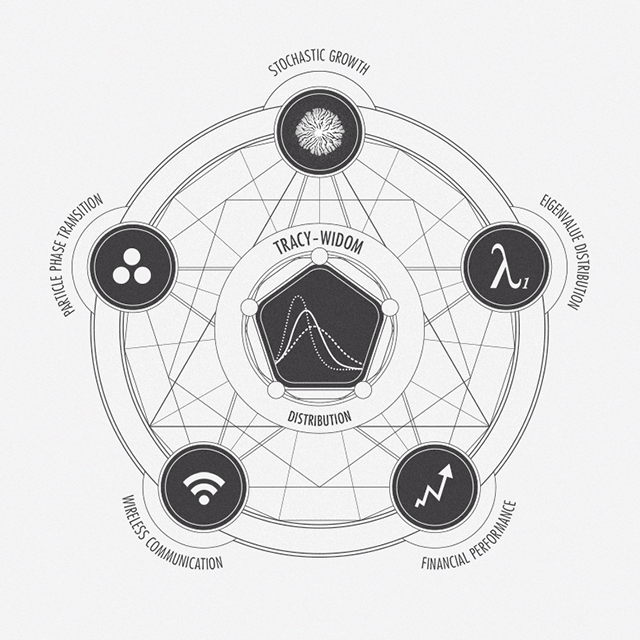A potent theory has emerged explaining a mysterious statistical law that arises throughout physics and mathematics.

Olena Shmahalo/Quanta Magazine
Imagine an archipelago where each island hosts a single tortoise species and all the islands are connected — say by rafts of flotsam. As the tortoises interact by dipping into one another’s food supplies, their populations fluctuate.
In 1972, the biologist Robert May devised a simple mathematical model that worked much like the archipelago. He wanted to figure out whether a complex ecosystem can ever be stable or whether interactions between species inevitably lead some to wipe out others. By indexing chance interactions between species as random numbers in a matrix, he calculated the critical “interaction strength” — a measure of the number of flotsam rafts, for example — needed to destabilize the ecosystem. Below this critical point, all species maintained steady populations. Above it, the populations shot toward zero or infinity.
Little did May know, the tipping point he discovered was one of the first glimpses of a curiously pervasive statistical law.
The law appeared in full form two decades later, when the mathematicians Craig Tracy and Harold Widom proved that the critical point in the kind of model May used was the peak of a statistical distribution. Then, in 1999, Jinho Baik, Percy Deift and Kurt Johansson discovered that the same statistical distribution also describes variations in sequences of shuffled integers — a completely unrelated mathematical abstraction. Soon the distribution appeared in models of the wriggling perimeter of a bacterial colony and other kinds of random growth. Before long, it was showing up all over physics and mathematics.
“The big question was why,” said Satya Majumdar, a statistical physicist at the University of Paris-Sud. “Why does it pop up everywhere?”
Systems of many interacting components — be they species, integers or subatomic particles — kept producing the same statistical curve, which had become known as the Tracy-Widom distribution. This puzzling curve seemed to be the complex cousin of the familiar bell curve, or Gaussian distribution, which represents the natural variation of independent random variables like the heights of students in a classroom or their test scores. Like the Gaussian, the Tracy-Widom distribution exhibits “universality,” a mysterious phenomenon in which diverse microscopic effects give rise to the same collective behavior. “The surprise is it’s as universal as it is,” said Tracy, a professor at the University of California, Davis.
When uncovered, universal laws like the Tracy-Widom distribution enable researchers to accurately model complex systems whose inner workings they know little about, like financial markets, exotic phases of matter or the Internet....MORE